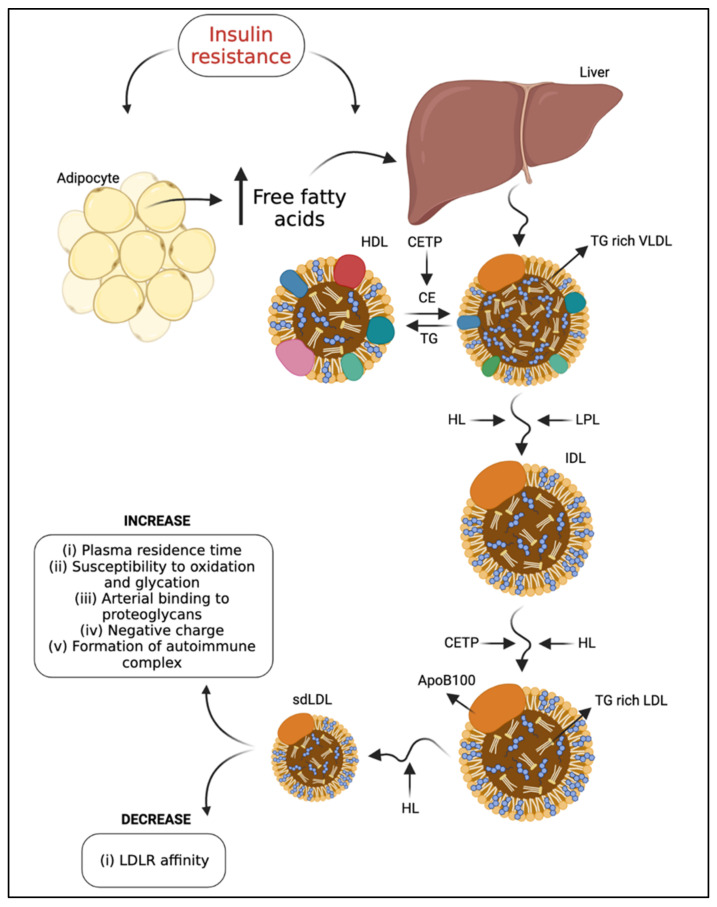Figure 1.
Schematic representation of the mechanism behind the generation of sdLDL in T2DM. Mechanisms leading to sdLDL in T2DM. Insulin resistance promotes triglyceride lipolysis in adipocytes and the release of free fatty acids (FFA) in circulation. Uptake and accumulation of FFA in the liver results in hepatic gluconeogenesis and affects lipid metabolism. FFAs taken up by hepatocytes are used to form new TG-rich VLDL particles. Remodeling of TG-rich VLDL through the action of CETP, HL, and LPL enzymes promotes the formation of small and dense LDL and more atherogenic particles. Consequently, these particles are electronegative, remain longer in the plasma, are more susceptible to oxidation and glycation, are more prone to bind to proteoglycans in the subendothelial space of the arterial vessel wall, and interact with beta2-glycoprotein I to form autoimmune complexes related to inflammation state. On the other hand, there is a decrease in affinity with LDLR. FFA: free fatty acid, TG: triglyceride, HL: hepatic lipase, LPL: lipoprotein lipase, CETP: cholesteryl ester transfer protein, VLDL: very low-density lipoprotein, IDL: intermediate density lipoprotein, LDL: low-density lipoprotein, sdLDL: small dense lipoprotein, LDLR: LDL receptor.

